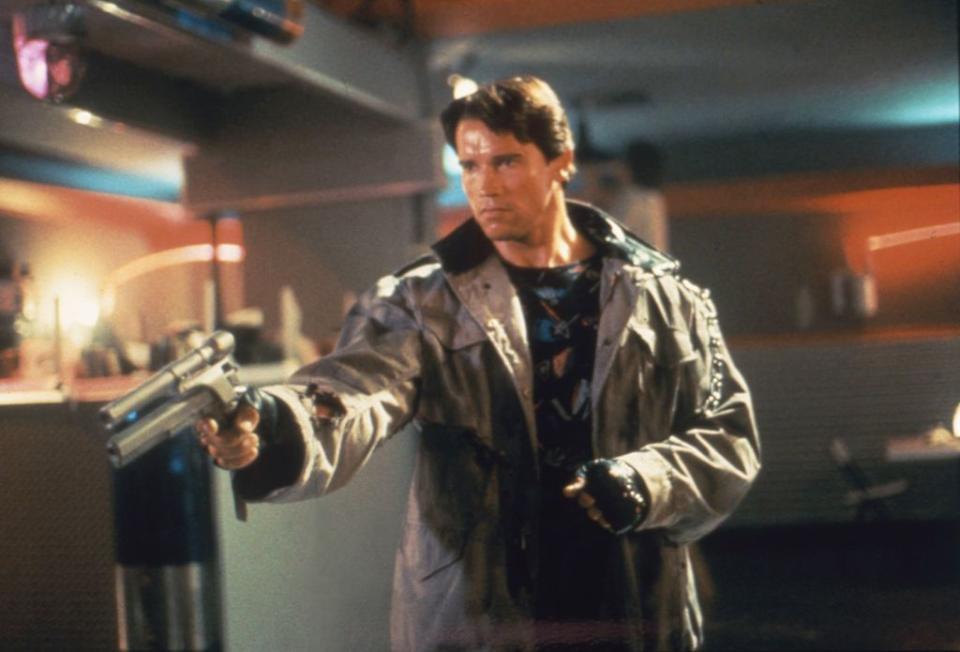Time Travel Movies Rely on the ‘Bootstrap Paradox.’ It Could Explain Real-Life Destiny

Imagine a scenario in which you visit a friend’s home and, to your shock, discover a time machine sitting in her living room. After a few jaunts to check out some dinosaurs, stir up a little trouble in 1453 B.C. Constantinople, and watch the moon landing in fuzzy black-and-white footage, live in 1969, your friend tells you there is something important she has to do.
Arriving back slightly before your time, you watch your friend as she teaches her younger self how to build the time machine in the first place.
“But … ” you stammer, cautious in case your friend—or her younger counterpart—takes offense and travels back in time to wipe you from existence, “if you used the time machine to travel back in time to inform yourself how to build the time machine, isn’t that a paradox?”
It is, because no one in this story ever actually sat down to figure out how to create a time machine.
This is the bootstrap paradox, which details an infinite cause-and-effect loop that develops around information, an object, or even a person that can no longer be given a discernible point of origin in a time travel scenario.
This results in a “closed causal loop,” in which some event or object is a key player in its own origin and couldn’t exist without its later self. The idea is woven through the imaginations of science fiction writers, theoretical physicists, and philosophers, meaning its roots in science and pop culture may be irrevocably interwoven.
Though less famous than the grandfather paradox—in which a time traveler kills their grandfather before they have children, and can no longer exist to go back in time and perform grand patricide—the bootstrap paradox is still an idea that philosophers and physicists have been grappling with for almost 100 years.
“The bootstrap paradox in time travel occurs when a piece of information that has no right to exist, nonetheless exists,” Seth Lloyd, a professor of mechanical engineering at the Massachusetts Institute of Technology and a self-described “quantum mechanic,” tells Popular Mechanics. “To illustrate the bootstrap paradox, consider the version known as the ‘unproved theorem paradox.’”
Lloyd explains that in the unproved theorem paradox, a time traveler finds a beautiful and elegant proof of a theorem in a book, then goes back in time and shows the proof to a mathematician, who includes the proof in his book. “The book, of course, is the same book in which the time traveler found the proof in the future,” he adds. “So who proved the theorem? No one proved the theorem! Where did the proof come from? Nowhere!”
Tim Maudlin, a philosopher of science who investigates the metaphysical foundations of physics and logic, says there is a key difference between the bootstrap paradox and the grandfather paradox.
“The bootstrap paradox occurs in certain logically consistent time travel scenarios. Unlike the grandfather paradox, which is a self-contradictory and hence an impossible scenario, in a bootstrap story, everything fits together in a logically coherent way,” Maudlin tells Popular Mechanics. “Still, the paradox arises because certain things or information [are] ‘self-caused’ or ‘come from itself.’” That means, in a sense, that these bits of information appear in the story without ever having been created, just like the instructions for building your friend’s time machine.
Maudlin — who alongside Oxford University philosopher Frank Arntzenius wrote the Stanford Encyclopedia of Philosophy article “Time Travel and Modern Physics”— adds that since it is not a matter of self-contradiction or logical incoherence, logic alone cannot rule out these bootstrap paradox scenarios. This has helped make the concept a staple of time travel stories in popular culture.
The Origins of the Bootstrap Paradox

Physicists first began to pay serious attention to the concept of time travel in the early years of the 20th century, following the work of Albert Einstein.
As he formulated the theory of special relativity, published in 1905, Einstein united the concepts of space and time into a single four-dimensional entity — spacetime — and also imposed the rule that particles with mass would need infinite energy to accelerate to the speed of light. This led to speculation about hypothetical massless particles called “tachyons” that could exceed the speed of light, but as a consequence, would travel back through time.
While this opened the door to physicists thinking about time travel, Einstein would violently tear that hypothetical door down ten years later when he formulated the theory of general relativity. Primarily a theory that describes the effect of mass on spacetime, general relativity implies that four-dimensional spacetime could be twisted into any shape. This means it could be possible to create a path that forms a loop passing back through time, returning to its original starting point — which would become known as a “closed time-like curve” or CTC.
The idea of time travel caused a serious threat to causality, the relationship between cause and effect, in that it could make an effect precede its own cause—a clear contradiction. The bootstrap paradox is more subtle than this (cause still precedes effect), but there is no starting point in the process. Instead, the paradox suggests the potential for “predestination” to causality, or the idea that the past is dependent on the future.
As the bootstrap paradox worked its way into physicists’ notebooks and blackboards, it was also making its mark on pop culture, with the two occasionally overlapping.
The Bootstrap Paradox in Pop Culture

The bootstrap paradox takes its name from an expression that dates back to 1834: to “pull oneself over a fence by one’s bootstraps,” which came to represent the idea of performing a ludicrous or impossible task. (In the startup world, it’s come to mark the idea of launching a company with your own money or whatever you can scrounge from friends and family—certainly a Herculean task.)
In popular culture, the paradox lent its name to the 1941 Robert A. Heinlein story, By His Bootstraps, likely one of the paradox’s earliest presentations to the public. In the story, a similar scenario plays out to the one we described about your time-traveling friend:
“A time travel machine is built by following the instructions in a book, which itself is sent back from the future. But how did the information get into the book? By being copied into a newly made notebook from the older version of itself,” Maudlin explains. “That is, no one ever sat down and figured out how to build a time machine, the information about how to do it is just there in a closed causal loop.”
Since the publication of Heinlein’s tale, the bootstrap paradox has made its way into a wealth of science fiction tales, though it often goes unnamed. For instance, in the popular Doctor Who episode “Blink,” the time-traveler that David Tennett plays must combat a menace called the Weeping Angels by passing messages from the past—when he is trapped without his own method of time travel, the TARDIS—to the present.
At the end of the story, with evil defeated, a log of the messages is passed back to the timelord before he is trapped in the past. Therefore, the log of messages has no set origin; It cycles between the past and the future in a closed causal loop.
Meanwhile, the Terminator franchise features a wealth of potential time travel paradoxes across the series. For example, the main mission of the earliest film is for Arnold Schwarzenegger’s T-800 to prevent the birth of John Connor. Yet, if the Terminator kills his mother Sarah, and prevents the birth of John Conner before he can lead the rebellion, then he never existed as a threat to the Terminator controlling Skynet in the first place; That means they’d never need to send a Terminator back to kill him at all,eEssentially creating a version of the Grandfather paradox with more robots.
Artificial intelligence-based boogeyman Skynet is itself, however, an example of the bootstrap paradox. The AI system that would go on to rule Earth and subjugate mankind was created from the leftover parts of the T-800 Terminator that was sent back in time to kill Sarah Connor and prevent the birth of John Connor in the first place. Eventually, Skynet’s own killing machines, including the T-800, were retro-engineered from these parts, meaning the T-800 is the source of its own origin. Classic bootstrap!
These are just a few of the more infamous examples of the bootstrap paradox in fiction, and some of these tales have even helped inform scientific theory on the subject.
“As part of our efforts to construct a self-consistent quantum theory of time travel via closed timelike curves, I did extensive reading of time travel narratives and viewing of time travel films,” Lloyd explains. “All time travel paradoxes seem to be versions of either the grandfather paradox or of the bootstrap paradox.”
Escaping the Bootstrap Paradox

Hugh Everett’s Many-Worlds Interpretation of quantum mechanics suggests that for every quantum possibility, a distinct universe is created. This can provide a solution to apparent contradictions in time travel.
“It has been suggested that paradoxes such as the grandfather paradox could be avoided by Everett’s Many Worlds—or more accurately, ‘relative state’—interpretation of quantum mechanics,” Lloyd says. “When the time traveler goes back and kills her grandfather, she is simply forcing a transition into a separate ‘world,’ or branch of the wave function, from the world in which she came.”
That means a time traveler hitching a ride on a closed time-like curve into the past actually causes the universe to diverge, and the world she arrives in is distinct from the one she left. Therefore, it is not her grandfather she kills in the past, but a version of him that will never go on to have a child or grandchild. Our time traveler’s birth, therefore, is not prevented.
So in the case of the bootstrap paradox, returning to our earlier scenario, our friend doesn’t pass the information for building a time machine to her earlier self, but a version of herself in the past in a separate world.
That means each backward leap passes the information to a new universe.
Even so, this doesn’t fully solve the Bootstrap paradox, as it doesn’t explain where this information came from in the first place; The instructions for the time travel machine still don’t have an origin point.
“Since no contradiction is involved, one can’t raise the same logical objection as in the grandfather paradox case,” Maudlin says. “But still, many people think that such ‘self-causation’ or lack of an originator of the information, makes the scenario impossible. And of course, if reverse causation is not possible, then this closed causal loop is not either.”
Maudlin does point out that the bootstrap paradox isn’t as intrinsically intractable as the grandfather paradox, however. In fact, it could be replete with a wealth of hitherto undiscovered exit routes.
“If one allows for closed causal loops, then in a way, the opposite thing happens as in the grandfather paradox case. With the grandfather paradox, there seems to be no logically self-consistent solution,” Maudlin concludes. “But in the bootstrapping cases, there are often several different solutions, with the closed loops taking different forms.
“In fact, there would not seem to be any explanation of why one, rather than another, of these solutions would be realized.”
Testing the Bootstrap Paradox
While Maudlin doesn’t believe that the bootstrap paradox could ever be experimentally tested, Lloyd disagrees; He has suggested an experiment to investigate the unproved theorem paradox version of the bootstrap paradox.
“We devised experiments to test the pre/retrodictions of our theory for both of the central paradoxes of time travel—the grandfather paradox and the bootstrap paradox—a simple experiment to test the pre/retrodictions of our theory for the unproved theorem paradox,” Lloyd says. “The test can be performed on a simple quantum computer. In the experiment, a bit of information—call it Bit A—is copied to a second bit (Bit B).
“Bit B is sent back into the past, where it turns out that B in the past is in fact the same bit that becomes A in the future. Rather than engendering a self-inconsistency, however, the bootstrap/unproved theorem experiment is entirely self-consistent.”
This means for Lloyd, perhaps the greatest paradox surrounding the bootstrap paradox is that it doesn’t have to be a paradox at all.
“The bootstrap paradox isn’t always paradoxical. In our proposed experiment, for example, we predict that the ‘unproved’ bit will turn out to be entirely random,” he says. “This makes sense, as at no point in the future or the past was there any bias introduced to make it anything other than random.”
For now, however, Lloyd doesn’t intend to attempt such an experiment. Instead, alongside his colleague Michele Reilly and artist Andrey Kezzyn, Lloyd expressed his interest in time travel in the form of the 2022 movie Steeplechase.
“The experimental demonstration of the grandfather paradox gave rise to so much publicity—not to say notoriety—however, that we decided to hold off on further time travel experiments for the foreseeable future,” the physicist explains.
You Might Also Like


